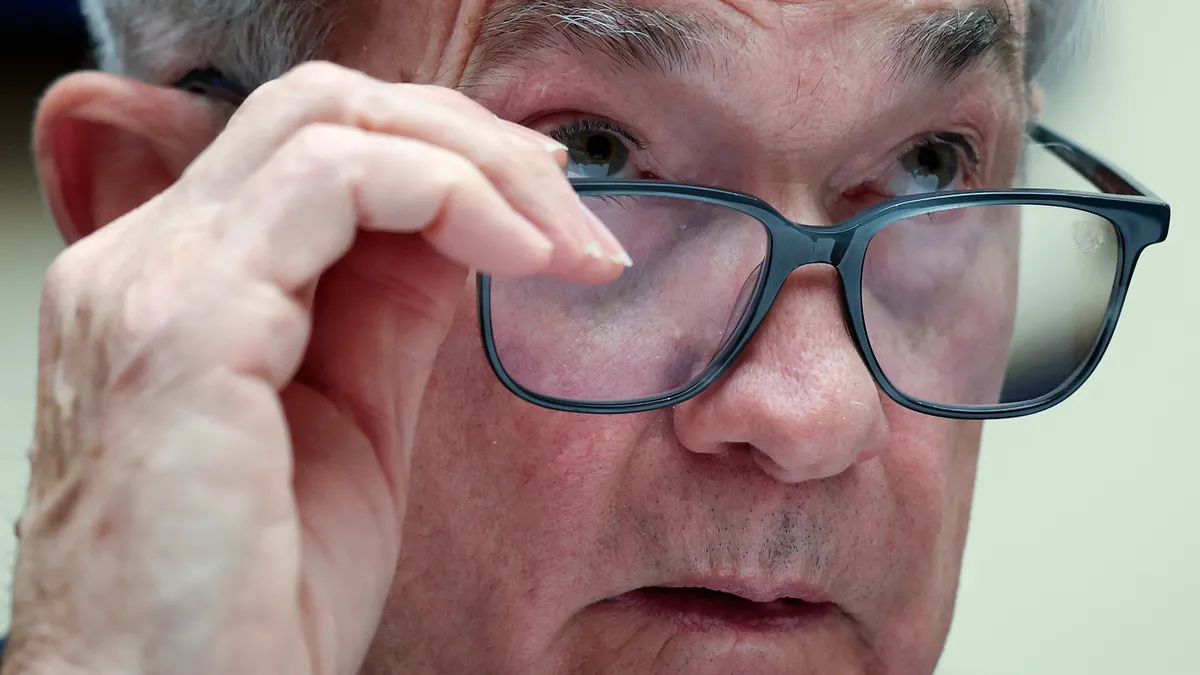Dive Brief:
- Worker pay and benefits surged 5% during the third quarter compared with the same period last year and a key inflation gauge for the Federal Reserve rose, keeping policymakers on track for a big increase in the benchmark interest rate on Nov. 2.
- The gain in the employment cost index lagged inflation, indicating that wage pressures may persist in the unusually tight labor market despite the Fed’s most aggressive withdrawal of stimulus since the 1980s. Stiff competition for workers and a report Thursday that the economy grew 2.6% last quarter suggest that the Fed next week will likely increase the main interest rate by 0.75 percentage point for the fourth straight meeting.
- The data shows price pressures easing and the economy softening, “but the progress is not sharp enough to point toward any moderation or course reversal in the foreseeable future” by the Fed, Douglas Holtz-Eakin, president of the American Action Forum and a former director of the Congressional Budget Office, said in a report.
Dive Insight:
Wages and benefits on a quarterly basis increased 1.2% from July to September compared with a 1.3% gain during the second quarter, the Labor Department said Friday.
The slight slowing in compensation gains follows increasing forecasts of recession and a Labor Department report this month that job openings plummeted to 10.1 million in August from 11.2 million in July. The ratio of openings to unemployed workers — a key signal for Fed officials of an overheating labor market — fell during the period to 1.67 from 1.97.
CFOs for months have confronted intense pressure to increase wages as “help wanted'' signs go unanswered and inflation persists near a four-decade high. They may not realistically expect wage pressure to decline as long as pay increases lag inflation and the number of job openings far exceeds the number of job seekers.
Aggressive Fed tightening slowed gains in the Consumer Price Index to 8.2% in September from 9.1% in June, the highest inflation in 40 years. Yet the central bank’s preferred measure of inflation — the core personal consumption expenditures price index — increased 5.1% on an annual basis last month compared with 4.9% in August, the Labor Department said Friday.
Fed Chair Jerome Powell and other policymakers have repeatedly said that the central bank needs to see some months of falling price pressures before it begins to slow its policy tightening and feel confident inflation is declining toward its 2% goal.
Fed officials have pledged to withdraw stimulus and hit their inflation target even at the risk of a setback for businesses and a slump in employment.
“While higher interest rates, slower growth and softer labor market conditions will bring down inflation, they will also bring some pain to households and businesses,” Powell said in a speech in August.
“These are the unfortunate costs of reducing inflation,” he said. “But a failure to restore price stability would mean far greater pain.”
The central bank at the end of a two-day meeting on Nov. 2 will probably raise the benchmark interest rate by 0.75 percentage point for the fourth consecutive gathering, according to economists and market analysts. Policymakers have increased the main interest rate this year from near zero to a range between 3% and 3.25%.












